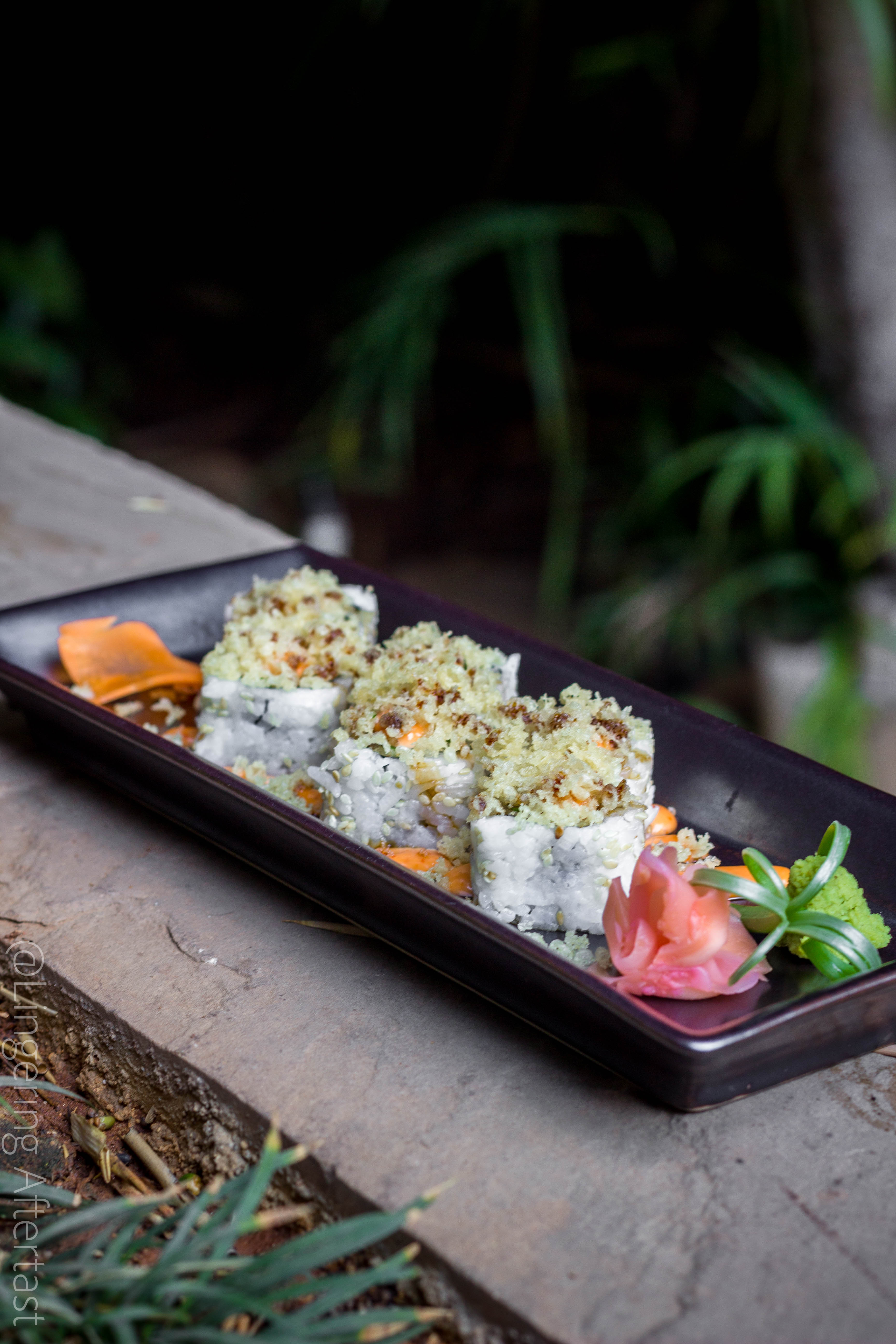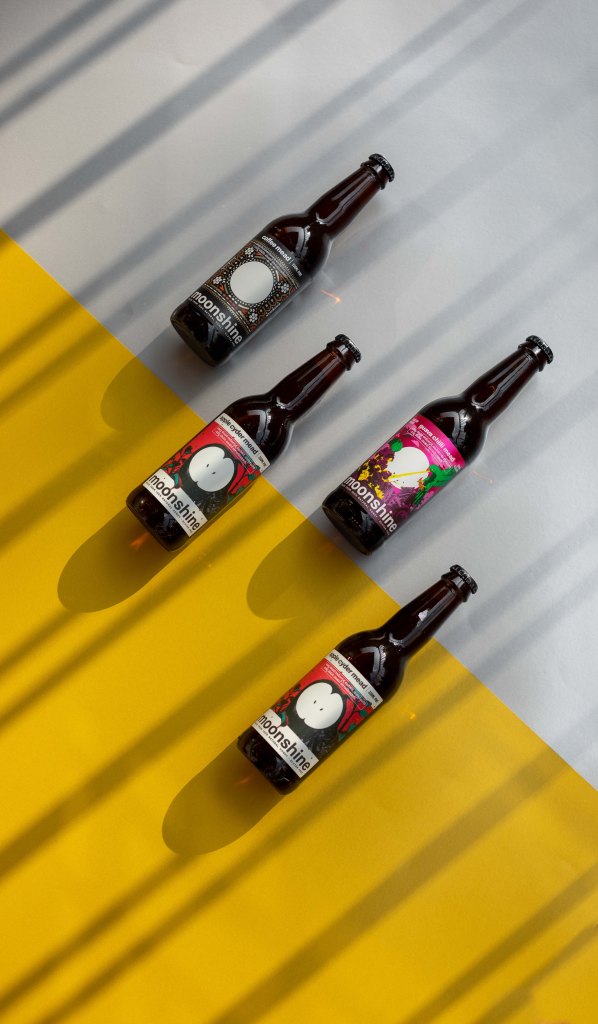
Picture this – one of our early ancestors , perhaps in Neolithic period , or so, may have stumbled upon a puddle of water collected in some fallen branch of tree. That puddle had some broken pieces of honeycomb with traces of honey in it. Honey that could have naturally fermented through wild yeast. Thirst or curiosity got him to take a sip of it. And that is how the first ever tasting of the honey wine may have happened. That got him high. Purely a matter of chance. Since there’s evidence of honey collection in the cave paintings, the probability of fermented honey can’t be entirely denied. True or not, it definitely makes for an interesting origin story. One of the few stories Rohan Rehani, the co-founder of Moonshine Meadery enjoys narrating as the origin story of Mead. He has a few more interesting ones up his sleeves.
Perhaps it is the similar curiosity and creativity that pushed him and his other co-founder Nitin Vishwas to fall hard into the rabbit hole of this forgotten fermented spirit – Mead. Their common love for this oldest oldest alcohol known to mankind, and a sincere effort to revive and re-introduce it here in India, got them to start Moonshine Meadery. What started as a garage project in 2014, went on to be Asia’s and India’s first Meadery in 2018 in Pune.
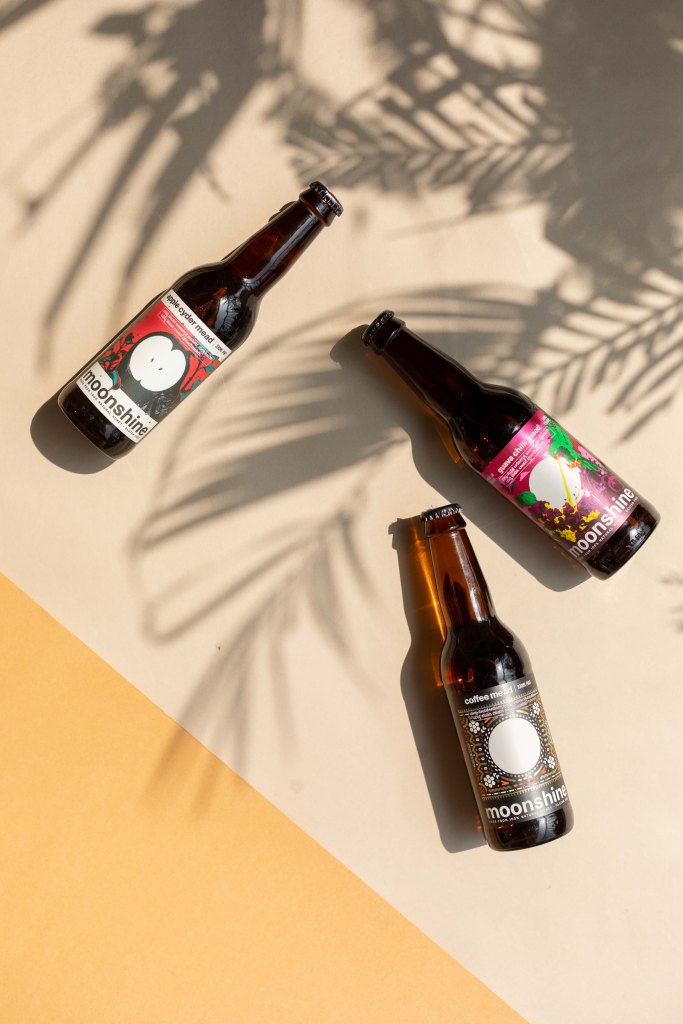
The earliest evidence of the existence of what is commonly known as the elixir of the gods, can be found in literature around the world, across cultures and geographies. While many believe that traces of mead was found in archaeological discovery of pots dating to 7000 BC, in the Henan province in China.
Closer to home, Mead and many other variants of spirits are mentioned in Rig Veda , referred to as Soma / Som rasa. From the Sumerians to Romans and the Greeks to African tribes to the Amazonians, this fermented honey drink had a special place in their culinary culture. But arguably , no one made it as popular as the Vikings.
When I think of medieval Vikings, I can’t help but think of the iconic Asterix & Oblelix. Or the Lord of the rings or more recently the GOT series. The horn mug with that sometimes frothy beverage drink is a sight etched in memories, for most of us.
The vikings were said to have travelled far and wide , with the Mead. Even-though other spirits like beer and wine were around, mead continued to be popular for the longest time.
Since the base was honey, Mead could travel well without getting spoilt, which set it apart from a few other spirits. Like many other food origin stories that came about because of migration, there were more and more new types of Mead that were created across the world.
And as result of this , more local ingredients , or maybe different fruits , grains , flowers or spices, a variety of Meads came into being.
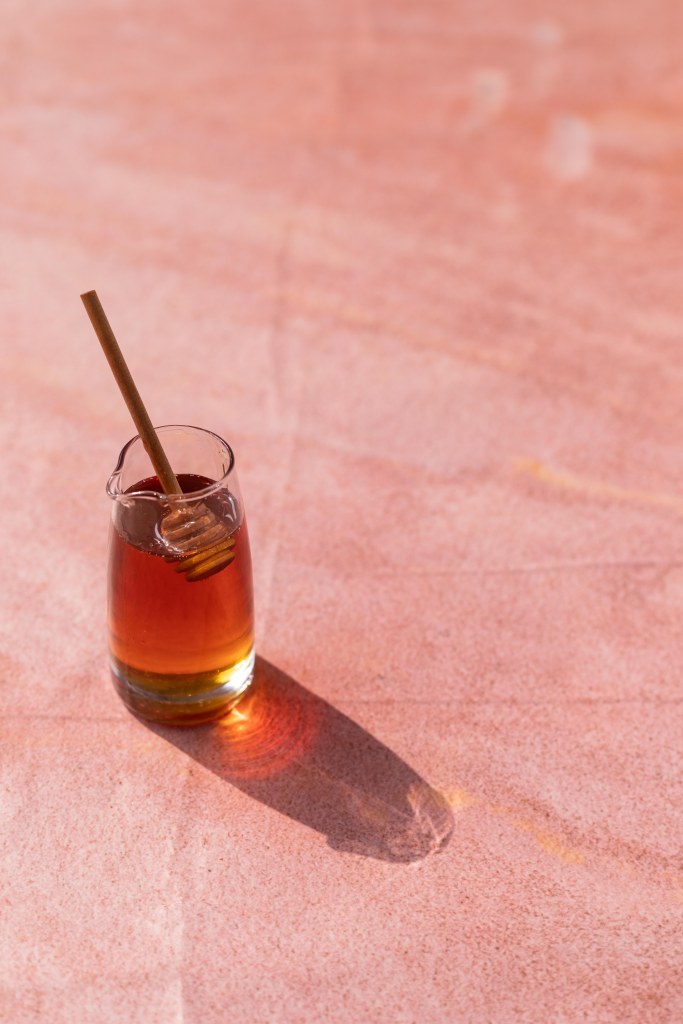
Here are some of the most globally acknowledged categories of Mead :
- Melomel ( mead made with fruits )
- Metheglin ( made with spices & herbs)
- Pyments ( made with certain type of grapes ),
- Cyser and Cider ( made with apples and apple juice )
- Hydromel ( more session based mead)
- Oak & Barrel Aged ( with some added oak wood flavour ) ,
- Braggot ( made with a mix of malt and other grains)
Moonshine Meadery offers something exciting from most of these categories , if not all. Actually goes beyond these categories to try new and distinct flavours.
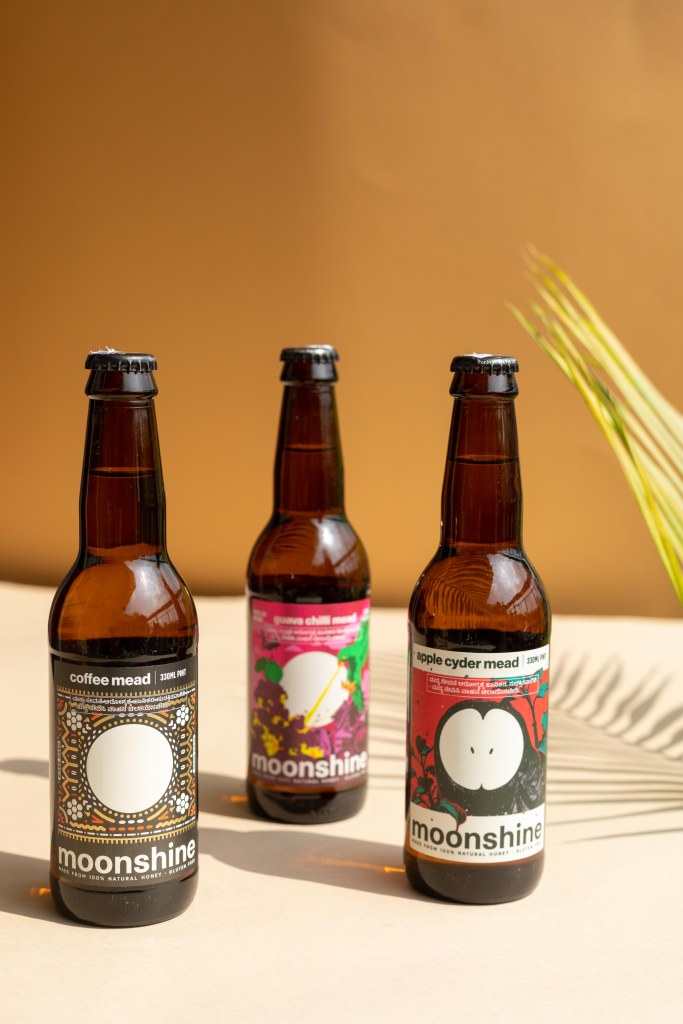
Playing with flavours – sometimes known and safe , sometimes absolutely quirky and adventurous. Some may work and get released as a limited edition Meads and some become stories instead. All this exciting action happens at their R&D space or as they like to call it – The MeadLabs. It is their way of continuously expressing themselves through various flavour experiments.
Just like food or cooking, familiarity helps build in instant connect and liking. However the more you try something different, the more you acclimatise your senses to newer experiences and in turns it helps evolve your palate.
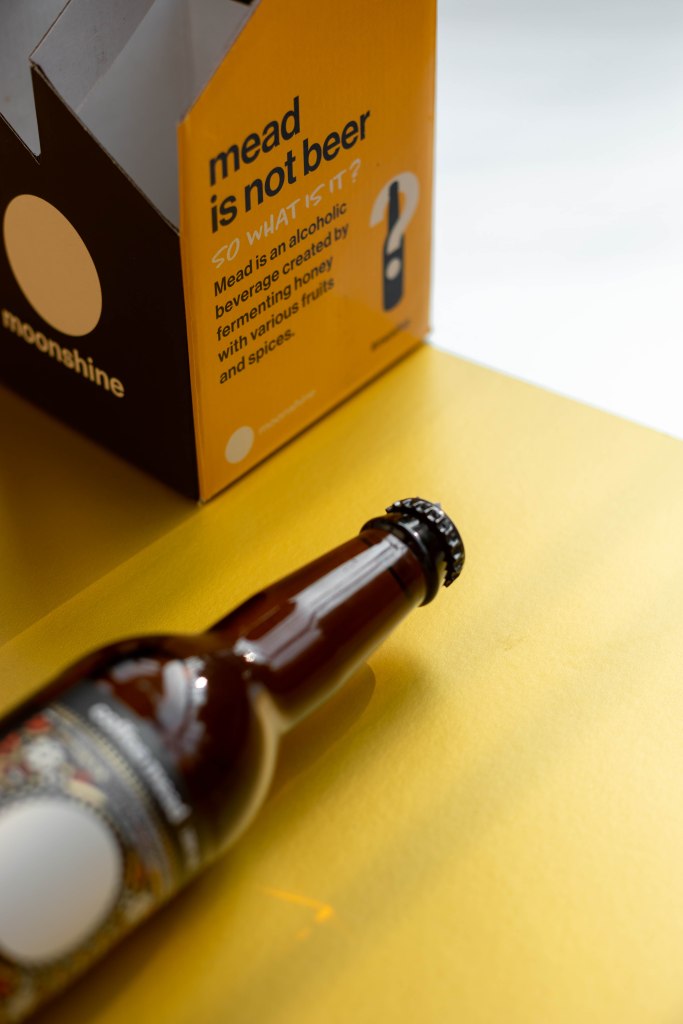
Since this ancient drink was making an entry into the modern world, a world which is currently ruled by beers and wine, they decided to be very clever with their product positioning.
Although they are packaged like a beer, in a dark tinted glass bottles , they are loud of clear about not being beer. And in my opinion , that could be the reason why mead here in India, is mistakenly referred to as a beer. In fact, during my interview with Rohan, I embarrassingly, ended up making that faux pas, but he was kind enough forgive me ( also pointed me to a particular Instagram post regarding that common error).
One cannot miss the witty branding and many fun, quirky storytelling on social media that is so unique them. . They also have a nice little infographic that tells us where Mead sits in the alcohol category scale. According to Moonshine Meadery, their mead sits between a Beer and a Cider.
Although I personally felt that the tasting notes of mead is more close to a wine than a beer. So I feel it could very well be pegged between a cider and a wine. But , I’m not a mead-maker. I only know flavours a little bit. I will trust the experts and their judgement in that regard.
Traditionally Mead is a honey based wine or Honey wine. However, Moonshine has it’s own different take on it and on how they stand their ground and be different.
While they use a wine yeast for fermentation, they are not so high on ABV. At 6.5 % ABV , still higher than a regular beer, it is less than a wine. They are sweeter than a beer, while being light and mildly carbonated.
People whole usually go from drinking sweet and carbonated drinks like colas etc, to be some bitter and carbonated drinks like beer , Mead could be that perfect cusp of transition. And that is how they trying the wade through busy world of familiar spirits.
Moonshine Meadery started with the traditional , apple cyder and coffee flavours – which also happen to the usual safe picks with most of their customers. They then got more creative at the Meadlabs , and launched some unique flavours such as grilled pineapple , chocolate orange , chilli guava , Thai ginger & lime, salted kokum to name a few. Amidst all these success stories , there is also an interesting flavour adventures that didn’t see actually take off, like the wasabi mead or the gooseberry with vanilla . These experiments are tucked away in some fun corner of the Meadlabs, and might only come out during a conversation with @Rohan, over a mead of course.
Ask Rohan of his favourite mead and you are very likely to get a different response every time , over different timeline. “ Mead” , he says “is so diverse and such a blank canvas to play with”. Currently , it is Guava Chilli Mead. It was previously the Coffee Mead, for him.
He went on to explain that there is is no such thing as a bad mead. It is just palatable for you or not. To each is own. There can be good honey or not so good honey ,or flaws in the fermentation process , but once fermented right, with or without extra flavours , it either works for you or not for you.
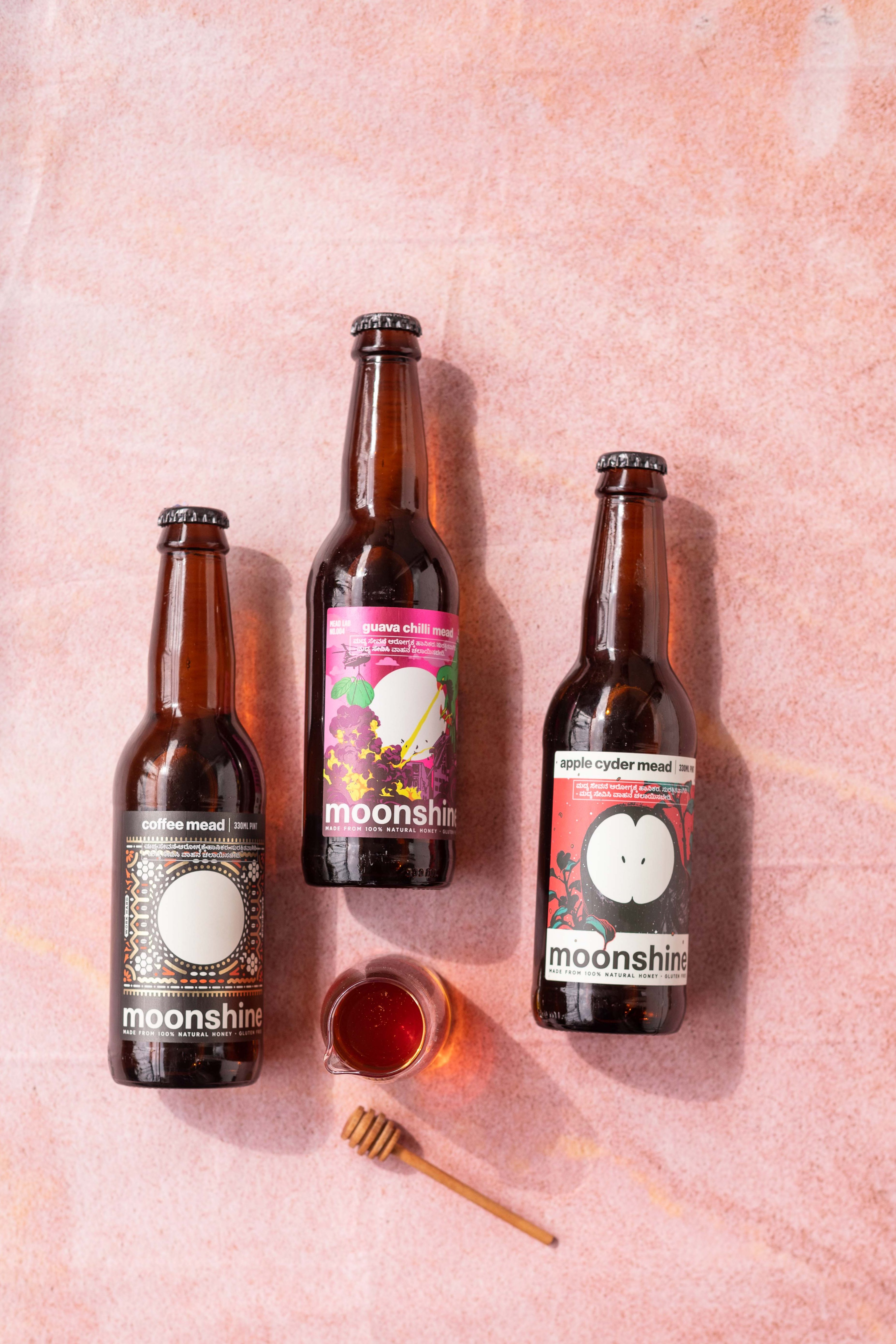
A great mead , just like food or any other analogy of life , is all about that right balance. Balance of sweetness and acidity. Carbonation and strength. That aroma true to its ingredients and their characteristics. And eventually the mouthfeel along with the appearance, where all these attributes come together. It is , at the end of the day, very subjective.
Staying on the subject of finding that right balance , just like any other spirit, there are certain meads that go well with certain kind of food than others. Rohan believes that Meads in general , go very well with south asian and south east asian food. Be mindful of what food complements that particular mead or the other way around, But again , that said, everyone’s reason to pick up a bottle of mead may be different. And of course , the more we indulge , the more we learn what works for you and what doesn’t.
While drafting this blog , I actually mixed my hazelnut black coffee with coffee mead. And it was absolutely smooth and worked brilliantly. My mead cocktail.
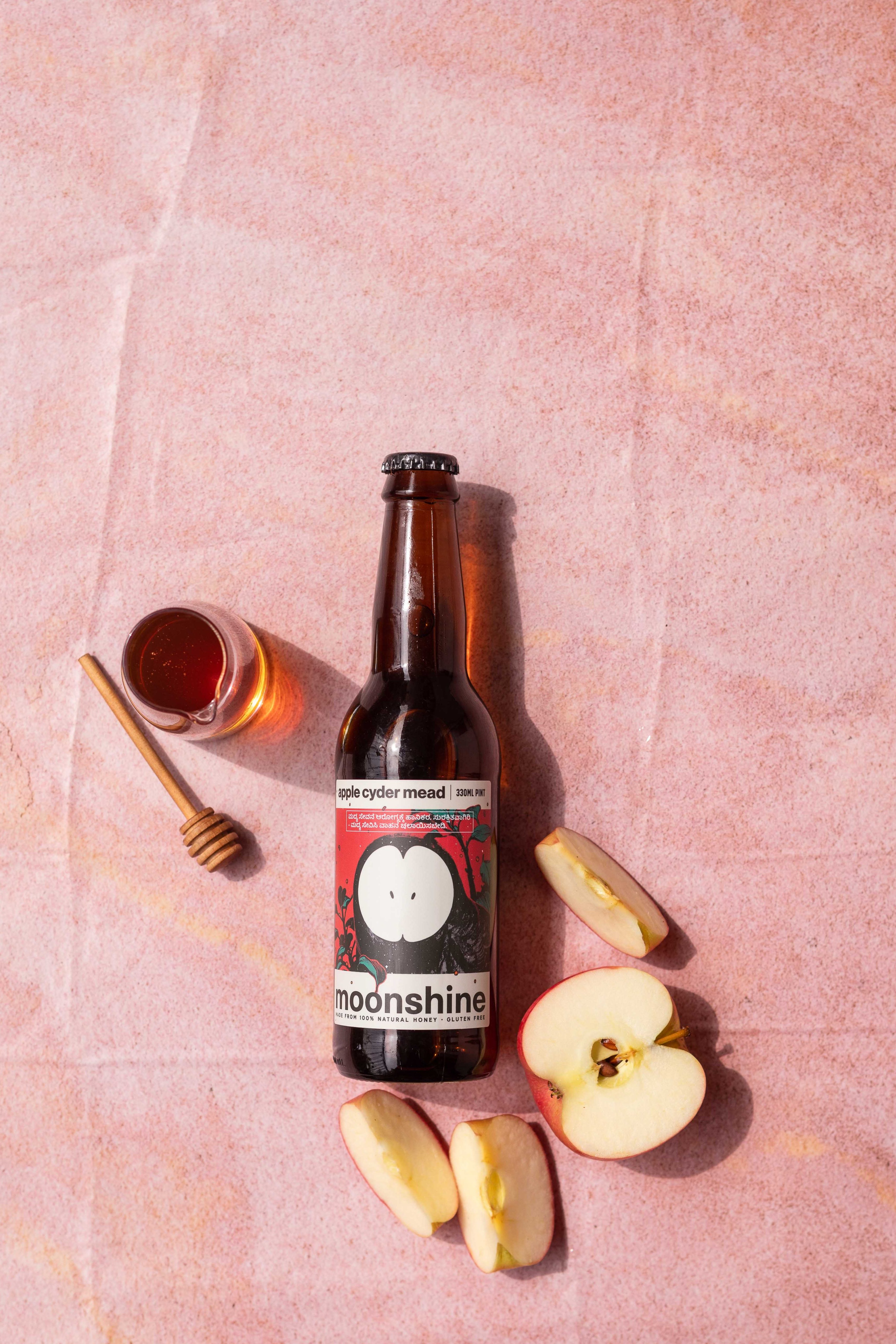
Amongst the three flavours that I got to try, I enjoyed the Coffee mead and the guava chilli the most. Apple Cyder was nice , but didn’t really stand out for me. It was a lovely , familiar cider flavour though. Not my favorite of the three.
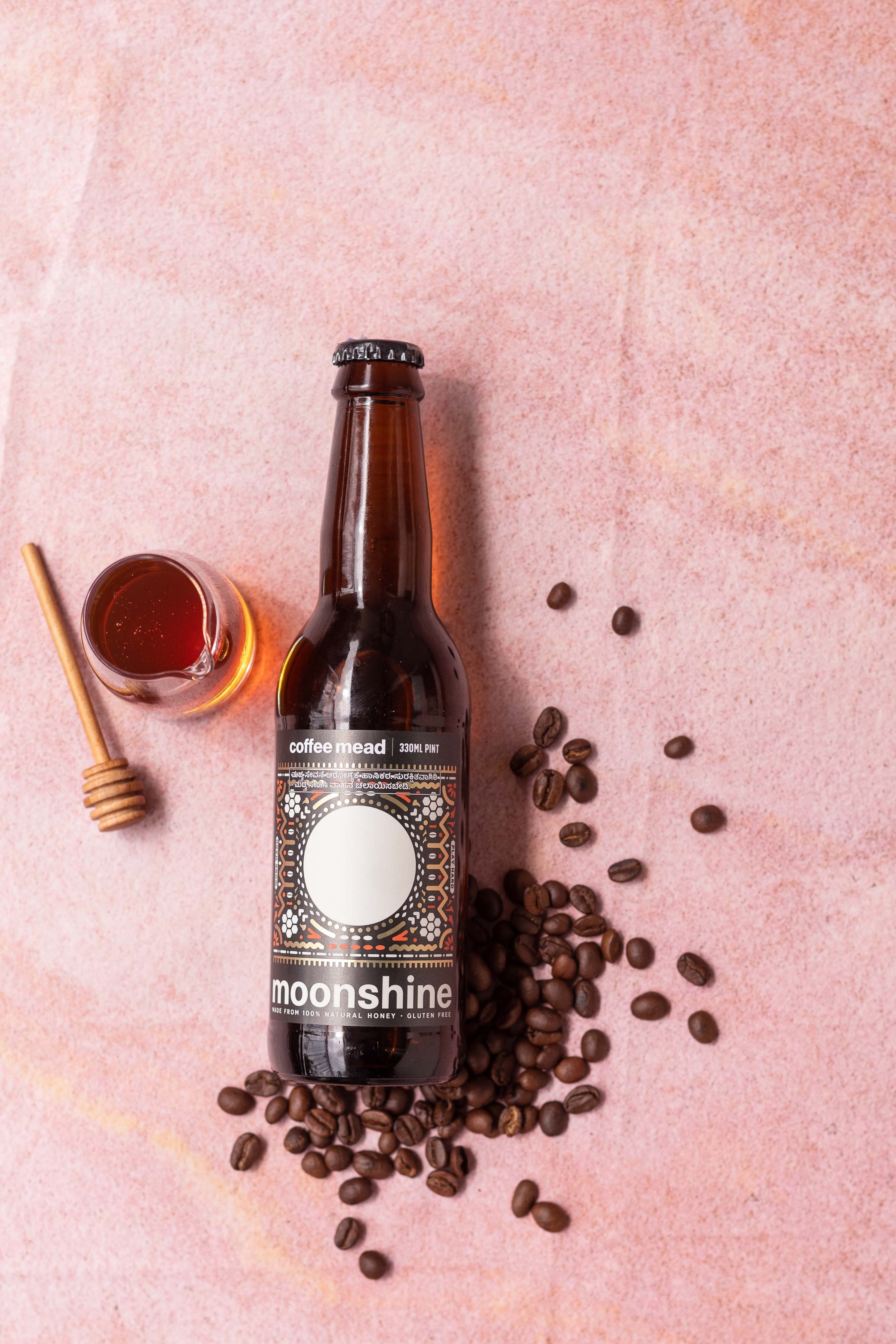
Coffee , could also be because I am biased.
But no, it was because it has this really mild roasted coffee notes. Almost reminded of a light , carbonated cold brew coffee( minus the dark coffee color of course) , with just enough acidity from the fermentation.

The Guava chilli is a gorgeous flavour, That beloved , nostalgic , quintessential summer flavour. Made with Pink Guavas and Bhut Jholakia chillies. The faint aroma of guavas is very noticeable, followed by the hit of the chilli heat. It is beautifully distinct. A definite pick-me-up in my opinion.
I do wish to try their other interesting flavours, whenever they make it available in the city. They, unfortunately , haven’t launched all flavours in all the cities they retail in the country. Until they do, will try to either wait , Or will arm twist someone who travels to/from the city that houses that particular mead.
While honey wine is a reason enough to try the Mead, there are more reasons I personally discovered , that elevated my interest in the brand.
The honey they use is sourced from migratory beekeeping method. They have these BeeBoxes that they transport from region to region across the country , based on the weather conditions , seasons , other factors. This method influences the sector load due to exposure to a variety of pollen load in a diverse topography.
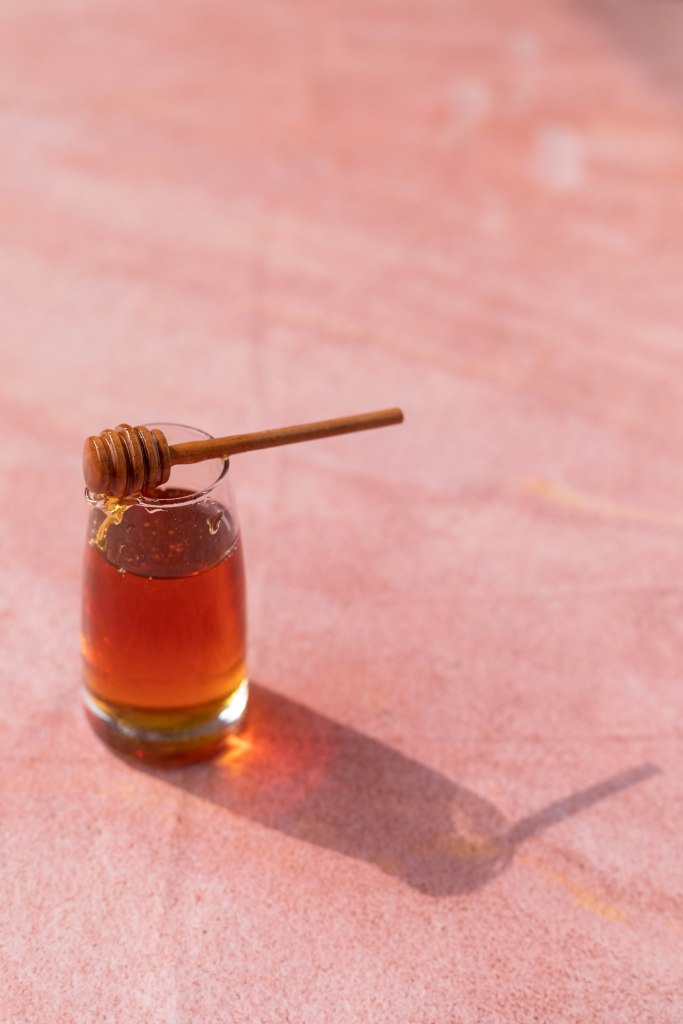
This has helped Moonshine Meadery to not only source great quality honey, but also be more conscious of the ecosystem better. Travelling with the bee boxes in different topography , they get to learn what trees and plants attract bees in which season or what weather condition or how certain farming conditions impact the bees etc.
As a brand they are intend to continue with sustainable practises that help them add to the add to the food value stream. It was during that discussion that Rohan mentioned about how he believes that Mead is probably the only, most sustainable forms of alcohol. That’s because of the no direct dependancy on agriculture for making mead, unlike other spirits. I thought that was an interesting perspective.
And then of course since they are into bee keeping , aside of making mead , they also have their line of bottled honey.
Aside of the being environment conscious , and following sustainable practises, Moonshine Meadery as a a brand is honest and real, just like it’s clean and simple fermentation process of honey. Using only natural flavours and no added artificial flavourings. Staying true to the flavour journey is something they practise.
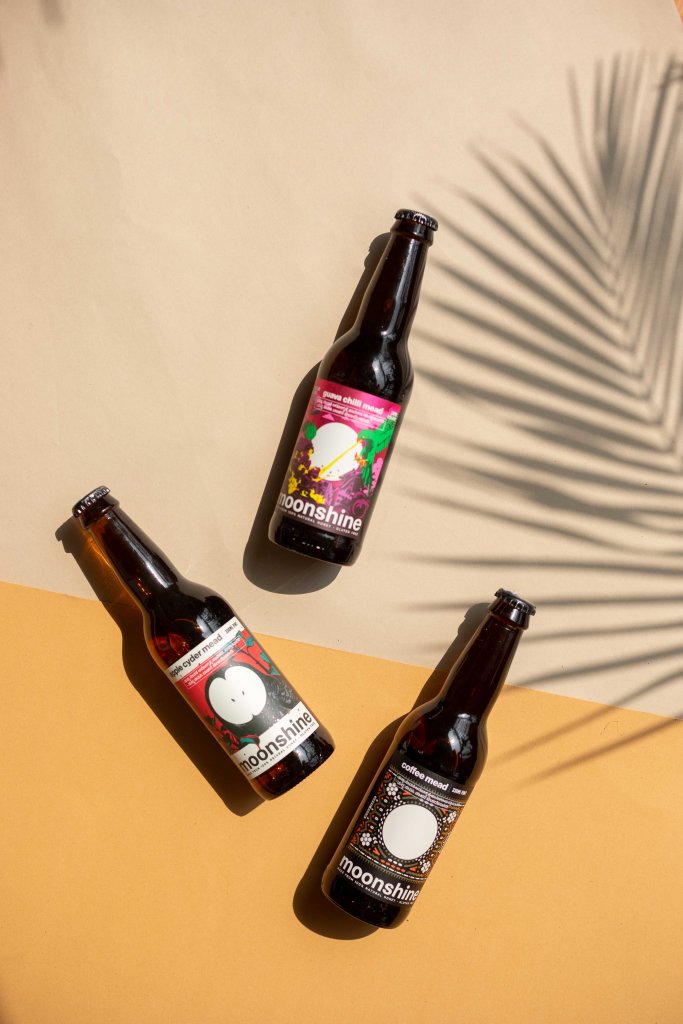
While is very easy to think like a mass production business , reduce cost in order to push profits up, it takes a lot to stand by your core values. Values that don’t allow you to compromise on any aspect of what you love. Finding happiness in every process and aspects of mead making. It could be discovering new flavours in the Meadlabs or building a community online or offline – it is a labour of love.
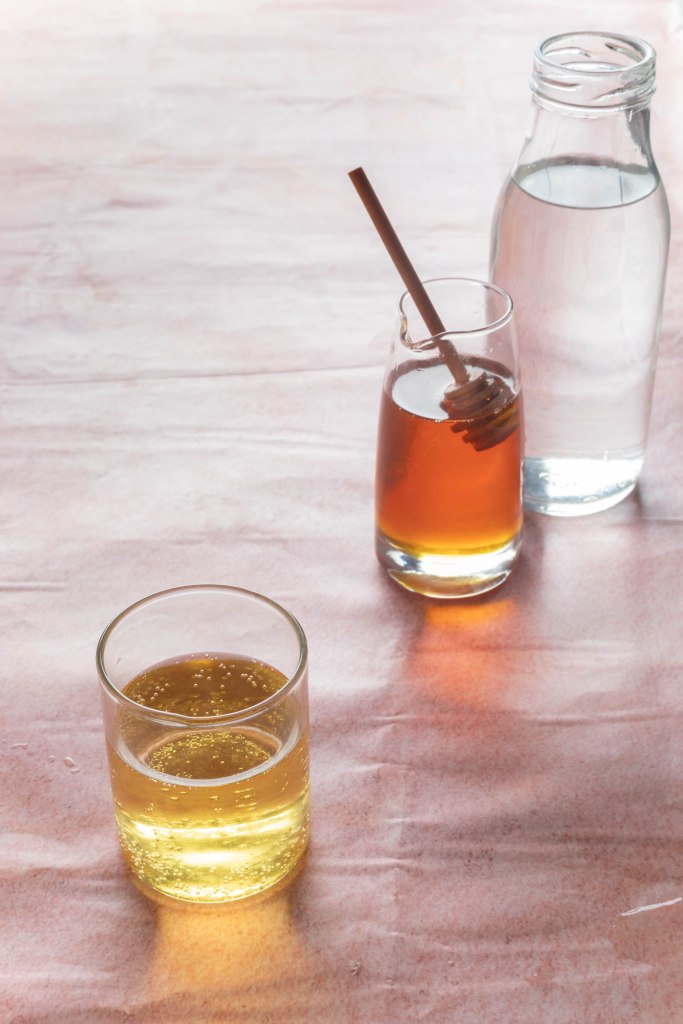
Honestly, I was a novice when I got my batch of mead to try from Moonshine Meadery ( as a part of their Bangalore launch) earlier this month. I found myself deep diving into the world of mead. Also because I am generally fascinated by all things fermentation.
Well, now after having tried the mead , having done my reading up on the subject ,and of course having spoken to Rohan about Mead and Moonshine Meadery , I find myself more drawn to it. Curious, yes. And have developed an appreciation for this ancient drink.
And in my opinion, that is exactly what anything new should intend to do – get you curious and draw you in.

You can learn more about Moonshine Meadery and their mead, on their website . They host meadery tours and honey tasting sessions as well, in case you are interested. The also have some cool merchandise on sale . https://www.moonshinemeadery.com/

































